![Mental Stimulation Ideas For Dogs]()
by Laurie Schlossnagle | May 21, 2015 | Training Methods
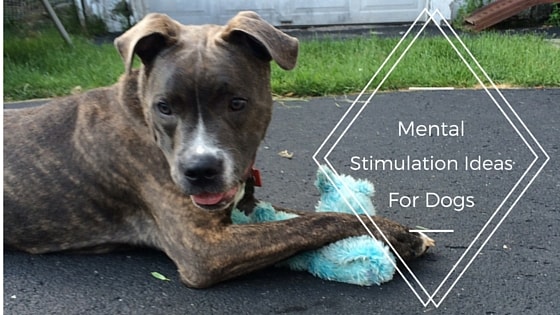
Dogs need both mental and physical exercise to be balanced and healthy. Finding ways to do this can be challenging.
Understanding the need for and providing opportunities for physical exercise is relatively common knowledge among dog owners. But the concept that having a dog or dogs is a partnership and that your dog wants and needs to spend QUALITY time with you, is more difficult. It is not enough to spend time cuddling with them; dogs want to use their brains! They have wonderfully intelligent, creative brains that need to be challenged and stretched to help prevent boredom-related behavior issues. Using some of the ideas listed will not only help dogs’ brains, but will also improve relationships with our dogs.
**Most of these ideas are intended for the owner to be involved or for the owner to supervise the dog. There is a section at the end of things to leave for the dog when s/he is left alone.
Create A Challenging Meal
Feed at least one meal a day in a mentally stimulating and challenging way:
- In a food puzzle (Kyjen puzzles and slo feeders, Kongs and Kong Wobbler, Premier Tug-a-Jug, Barnacle, Squirrel Dude, and Mushroom, Buster Cube, Treat Ball, IQ Ball, Nina Ottosson puzzles) – these are not meant to be left unsupervised with the dog (with the exception of Kongs, Barnacle, Squirrel Dude)
- Throw the food into the yard.
- Put the food in an empty, dry (labels, rings, and caps removed) pop bottles, milk jugs, water bottles.
- Put the food in boxes (see “Toys” section for more information).
- Put the food in a muffin tin (see “Toys” section for more information).
- Use the food in a training session.
- Almost any of the ideas listed below will work to feed a meal.
Games
Get creative and encourage owners to play games with their dogs. Here are a few games that are simple and quick to play every day.
- Hide and seek – with people, toys, and food
- Rapid recalls
- Round Robin recalls
- Tag
- Musical chairs – play music, play with your dog, when the music stops ask your dog to execute a behavior on a mat or a rug, when the music starts again, play again
- What can you do? – get your clicker and treats, ask your dog “what can you do?” start clicking and treating offered behaviors (your dog will probably do SOMETHING to get you to click/treat – use these behaviors to play this game – when we play this, the dogs must offer different behaviors to get the click/treat. Note: this is not a shaping exercise; this is a game.)
- 101 Things to Do With a Box (or a laundry basket)
Toys
Toys come in all shapes and sizes. They are great tools to prevent boredom and enrich a dog’s life.
- Flirt pole (make your own – directions can be found online; I like the Kong version because it’s easy to change out the toy at the end of the line).
- Long line with a grocery sack on the end – your own version of lure coursing (think greyhound racing and chasing the lure). **Don’t let your dog chew on or ingest the bag!**
- Ice sculptures – bowl or bucket or bottom half of a gallon jug – fill with water, toys, treats (carrots and apples work really well!) – freeze – put outside for your dog to play with, interact with, get the toys and treats out of.
- Boxes – start with one box, put some treats or a favorite toy in it, have your dog get the treats/toy out of the box. Progress to nesting boxes with the treats/toy in the innermost box. (This can also be used to feed meals.) Make it more interesting by using peanut butter, spray cheese, or cream cheese in one of the boxes.
- Muffin tin – put treats or kibble in each hole, cover some or all of the holes with tennis balls or crumpled paper. You can also use canned food, rehydrated foods, peanut butter, spray cheese, yogurt, and cream cheese
- Yoga mat – unroll, sprinkle treats, roll back up. Have your dog unroll the mat and get treats.
- Small round basket – put treats or a toy under the upturned basket and have your dog figure out how to get them.
- Perches – phone books covered in duct tape or small, stable stools. Play with different things your dog can do with these. Two paws on (front, back, right, left), four paws on, two paws on move around, etc.
- Hol-ee ball stuffed with fleece strips and small treats or kibble
- Make a “burrito” out of an old towel or blanket, folded up with treats in the folds.
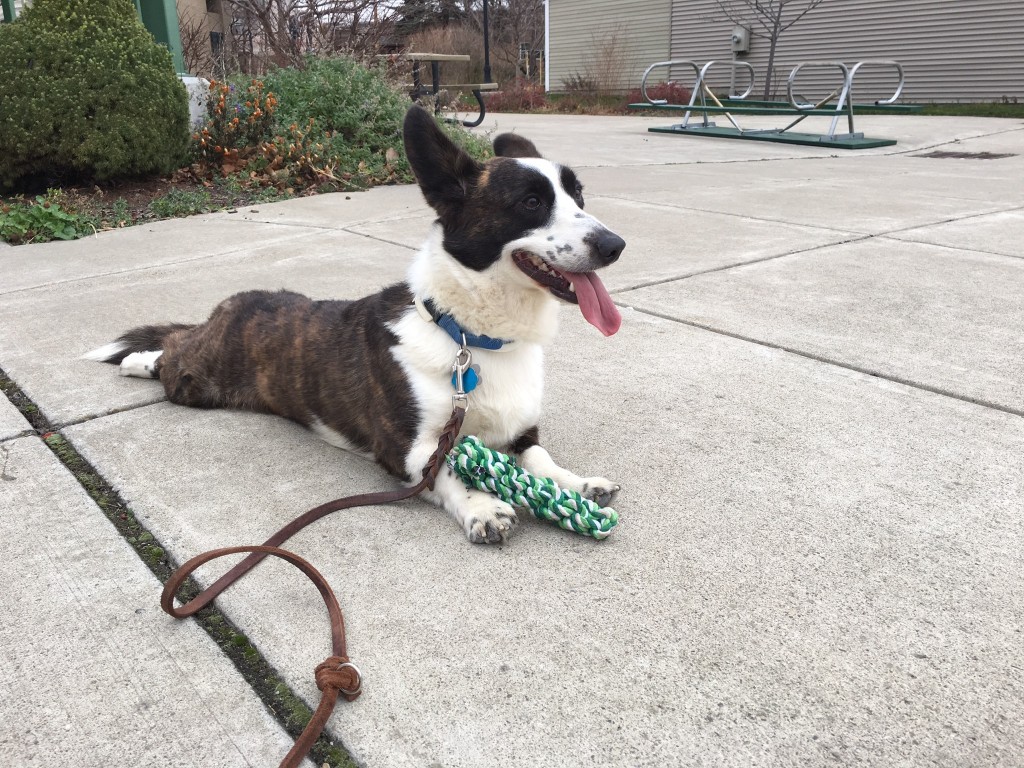 Other Activities
Other Activities
- Take a class – either in person or online – the Fenzi Dog Sports Academy has some great online courses. If you can’t find a class locally or online you are interested in, consider working with a certified, experienced trainer (again, in person or online) to help guide you, answer questions, and help you stay on track. (Scent or nosework classes are a great class for dogs who need to be stimulated/challenged!)
- Join a walking group that takes regular walks with their dogs (I DO NOT recommend off-leash, play group type walks – the walk should be as much about you and your dog as the social aspect for you with the other humans. It should NOT be about the dogs physically socializing.)
- Teach the dog tricks – Do More With Your Dog is a great online program for earning certificates/titles for teaching the dog tricks.
- If the dog likes to dig, create a place him/her to dig – a sandbox, an area of your yard – digging is a natural canine behavior and many dogs reduce stress and get a lot of stimulation when they dig.
Things You Can Leave With The Dog Unsupervised
If it is a multiple dog situation, I only recommend these if each dog is in a crate while you are gone to prevent any issues with resource guarding.
- Stuffed and frozen Kongs, Squirrel Dudes, Barnacles
- Bully sticks – freeze these too so they last longer
- Stuffed and frozen tracheas
- Ears – cow, pig, lamb
Mental stimulation is as important as physical stimulation for dogs. Encourage your clients to plays games and work with their dogs to build their bond and prevent boredom in their dogs.
Get Dog Training Business Tips!
Receive valuable dog training business tips and resources every week! Subscribe to The Modern Dog Trainer now by submitting your name and email below.
[mc4wp_form]
![Mental Stimulation Ideas For Dogs]()
by Monica Callahan | May 6, 2015 | Training Methods
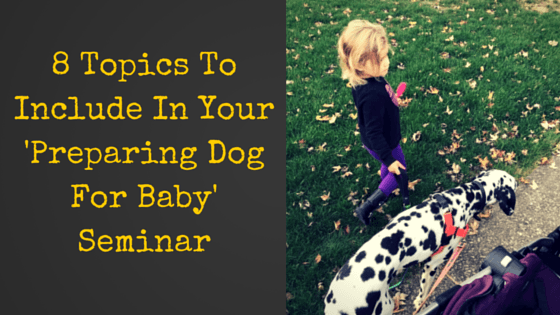
One of the most important services you can provide as a dog trainer is helping parents to prepare their dogs for the upcoming baby. Parents-to-be are nervous for what to expect for their own life, but add in their dog, and they are nervous for how their dog will also feel. I have been providing a PowerPoint presentation for parents-to-be over the past three months and out of the 20 or so parents I have spoken to, at least 90% of them have said they are nervous about how their dog will feel since they currently get so much of the owner’s attention. So, what exactly is important information for parents-to-be to have to help them and their dog feel better about the new family member?
1. Bite Statistics
I start my PowerPoint of with basic bite statistics, stating how many people are bit a year, how many of them are children, and how many of them were unsupervised. I believe parents-to-be need to know that dogs are dogs, and should be treated as such for the dog and child’s benefit. I believe it also helps drive home the fact that a dog and baby should never be left unattended together, and that the owner should always be able to get to the baby before the dog. Always.
2. Canine Body Language
One of the most important things parents-to-be can do is to know when their dog is uncomfortable. I like to include Lilli Chin’s drawings of body language and fear body language for my parents-to-be. They are a light-hearted way to show what to look for and owners really take a liking to the pictures. They enjoy going over the hand outs with me and then I point them to more detailed information such as Youtube videos or books on body language. I tell them what stress looks like in a dog and what a relaxed dog looks like.
3. Basic Obedience Cues
As a parent, they will be using many basic cues throughout the day to keep the dog and baby safe and out of the way when things get hectic. I like to include their name, sit, down, a place cue, and wait/stay. I tell them to start incorporating these cues into their every day schedule. Small training sessions can also be mentally stimulating. I also suggest group classes for appropriate dogs as a way to bond with their dog and spend time with them before the baby comes.
4. Behavior Modification
I tell parents-to-be to start working on behavioral issues as soon as they find out they are pregnant because they will not magically go away after the baby comes, and can often times behavior issues can worsen after the baby arrives. I include a slide on what the difference between a trainer, behaviorist, and behavioral consultant are and where to find a reputable professionals for assistance.
5. Desensitization
Helping the dogs to become comfortable with all the new things going on is one of the most important things that can be done before baby comes. I advise families to set up all their child paraphernalia as soon as they receive it so that the dog can become comfortable around it. Slowly incorporate the swinging swing, the moving stroller, and any other object that may move or make noise. Also, I show them how to desensitize their dog to handling of the ears, muzzle, tail, paws, and torso. I make sure to include that children should never be able to ride or handle their dogs roughly, but if an accident ever occurs, we want our dogs to be as prepared as possible.
6. Household Preparation
This includes mental stimulation, relax stations, and quiet areas. Frozen food toys can be prepped before baby comes so parents have something quick to give the dogs if they have an emergency with their child and cannot entertain their dogs at that moment. It lets them know their dogs are doing something productive so they can focus on their child.
Relax stations are places parents feel confident leaving their dogs while they deal with their child, or places the dogs can learn to relax while around the child. These include the dog’s crate, baby gating off special areas, Xpens for dogs who are good with barriers, and tethering systems in the same room so dogs can see and be a part of the family, but cannot reach the child. Tethering systems are good to recommend when the dog normally sleeps with the owners, as they can still be on the bed but cannot reach the baby when they wake up at night. Reinforcing their dogs when they are calm around the baby in these relax stations will help the dogs learn to relax around baby. Quiet areas are places that baby and dog can go when they need to get away from each other. I generally recommend that the nursery be dog free, and the crating area for their dog be child free. The nursery can either be gated off or they can start barrier training before baby comes.
7. Introductions
When the time comes for introductions, things are kept low-key. I think parents-to-be are sometimes surprised to hear how low-key introductions should be kept. Parents should be calm and quiet when they decide to introduce their dogs and baby. If other people are in the house or the parents are stressed or worried, I let them know it is ok to hold off introductions. They don’t need to be rushed. When the time comes, they should be holding baby or have them somewhere up higher that is sturdy. Dog and baby never need to meet face to face. I tell parents the most important information I received was, “This is MY baby, not my dog’s.” Dogs will get to know baby through smell and every day routine with the baby. They should never have free access to the baby in the beginning, and a parent’s arm should always be between dog and baby in case something needs to be interrupted. Baby carriers such as slings or wraps can be used in the beginning to keep baby close to the parents and give the parents two hands to use with their dogs. Carriers are also nice for prey driven dogs because it keeps baby’s arms and legs from moving and becoming enticing to the dogs.
8. Routine
Most dogs do well with a routine, but babies are never good with a routine. I let the parents know they should be keeping their dog’s routine as close to normal as possible during the transition. Dog walkers can help keep their dog’s physical exercise up those first few weeks while they get used to being new parents. I mention my day training program that is perfect for mental and physical exercise. If they can’t get their dog out as much as usual, recommend a variety of different ways they can mentally stimulate their dog with toys and their breakfast and dinner. I also tell the parents that it is important to give their dog attention throughout the day, not just when baby is napping.
Preparing for a baby can be very stressful, as well as exciting, for a family, so I try to give my families as much information as possible to help make the transition smooth. Parents walk away feeling relief after this presentation because it touches on a lot of topics they never even thought of before. It is our job as professional dog trainers to make sure parents are prepared, and that the dog has as easy a transition as possible. What other topics would/do you include in your dog and baby presentation?
Get Dog Training Business Tips!
Receive valuable dog training business tips and resources every week! Subscribe to The Modern Dog Trainer now by submitting your name and email below.
[mc4wp_form]
![Mental Stimulation Ideas For Dogs]()
by Liz Wyant | May 5, 2015 | Training Methods
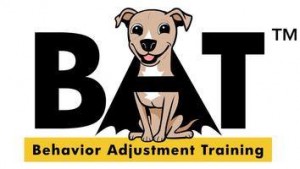 This is part 2 of a 3-part series on Behavior Adjustment Training (BAT), created by Grisha Stewart. Part 1 can be read here. In the first part you learned about the basics of BAT and how a “perfect” session should look. In part 2, you will learn why it is so effective for reactive/aggressive dogs.
This is part 2 of a 3-part series on Behavior Adjustment Training (BAT), created by Grisha Stewart. Part 1 can be read here. In the first part you learned about the basics of BAT and how a “perfect” session should look. In part 2, you will learn why it is so effective for reactive/aggressive dogs.
1. BAT Respects The Dog
As a modern dog trainer, you know that the dogs on the other end of your leash deserve respect as thinking, feeling creatures. Too many trainers feel that dogs need to be flooded to help them “get over” their fears or reactivity. Even the best of intentioned force-free trainers may sometimes keep dogs right at their threshold point for counterconditioning and desensitization purposes. BAT, however, never forces a dog to get closer to their trigger than they are comfortable doing.
2. BAT Gives The Dog Choices
As stated above, BAT gives the dog the ability to choose whether and how to approach their trigger. Giving a dog the ability to make choices empowers him. Empowering a dog can make a fearful dog more confident and help a reactive dog learn other, more appropriate ways of dealing with their triggers. Letting the dog choose their speed and approach also keeps stress at a minimum, which makes learning easier.
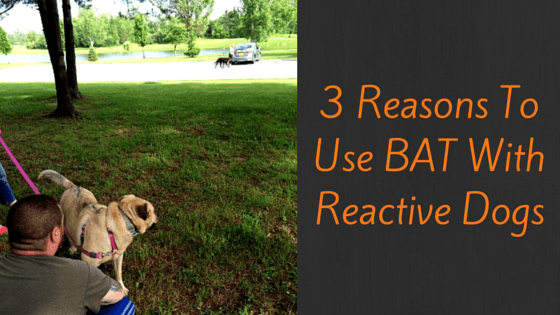
3. BAT Teaches Dogs They Can Move Away
Though this may sound odd, sometimes dogs haven’t learned that they are capable of moving away from their trigger. Starting at a safe distance allows them to learn this skill before they reach the point of no return and get magnetized to their trigger. Teaching dogs that they have the power to retreat can keep a fearful dog from lashing out and give a reactive dog another option.
Want To Learn More?
Though BAT is simple, it is not easy. If you are interested in learning more, you have the following options:
You can watch a lovely free BAT Overview video that Grisha offers.
You can also watch a full 2 hour BAT Intro Webinar that Grisha put out. It is $29 but well worth the money if BAT is something you’d like in your toolbox.
Finally, to get the full immersion and become more proficient and comfortable in its use, you can take an online course called BAT 101.
Get Dog Training Business Tips!
Receive valuable dog training business tips and resources every week! Subscribe to The Modern Dog Trainer now by submitting your name and email below.
[mc4wp_form]
![Mental Stimulation Ideas For Dogs]()
by TMDT Team | Apr 29, 2015 | Training Methods
Immediate, in the moment feedback is the key to Fido skipping a grade or two in the school of advanced good-behavior. In fact, dogs respond just the same to current feedback as us humans. Positive and current feedback–that is. So why don’t’ we use it all of the time? Using verbal praise effectively in dog training is extremely important.
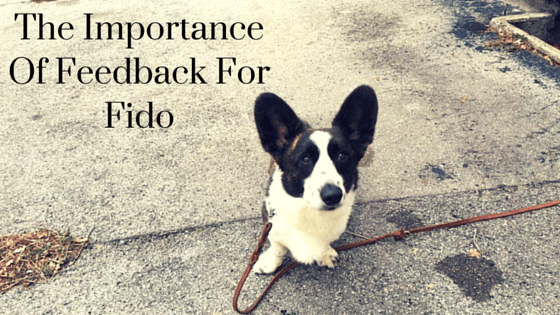
Use the Force
Imagine for a moment that you were blindfolded and I was to ask you to navigate through an already familiar setting such as your regular supermarket with a list of items that you needed to quickly gather. Without any help.
Now imagine that although you were blindfolded, I would offer you feedback through word or sound to clue you in to on-coming people, carts, or even through the isles and the items that were in them. Which would be more effective in getting you to respond in the desired manner, and how much feedback would you want? Of course your answer would be: “A metric ton!” We should consider the value of positive immediate feedback in working with pups in the same way. If I let you stumble through the supermarket for 20 minutes before giving you feedback, you can imagine how ineffective the feedback would be. And, more than that, if I only said: “no, not that way” instead of telling you what TO do, you’d be almost as lost.
Bad Feedback
It’s true: dogs often receive feedback. However, it’s generally when they have done something wrong. We tend to use bad or negative feedback to tell our dogs when they have done something wrong, such as: “What did you do?!”, in that familiar low and grumbley tone. Sometimes even pain or fear are paired with the tone to send a message to the pup that they did wrong. It’s common that the habitual immediate feedback is negative and that the good feedback generally happens after the fact or is expressed later during snuggle time, unrelated to the desired behavior on the spot.
So, how do we change this?
What Just Happened?
The simplest example of common feedback that a dog often receives is leash-walking feedback. The pup is likely to be familiar with the “eh-eh” and a tug on the leash when they pull, but what about all those well-behaved steps they took while they were on the walk? Enter positive immediate feedback!
Chances are, you or your client are going to be walking a dog today. During the walk while the pup is walking nicely, sweet words of encouragement in a nice tone should be offered. Reward the pup with happy feedback as they offer good behavior such as a well-paced walking or a simple look-up and acknowledgement to the walker. The beauty of positive feedback is that it can be given frequently. Pair a happy tone and excited voice with a tasty morsel and the pup will be well on his way to responsive good behavior. With positive feedback and food rewards it’s easy to catch a dog being good–and reward the behavior right then and there.
Going for Gusto
I’ve mentioned tone, but the energy and volume behind the positive feedback shouldn’t take a back seat. I often notice at first that when my clients are doing an exercise and they give praise and positive feedback, it’s generally always either muted or audibly non-existent. I often ask my client, “Why are you whispering, are you in a library?” As easy as it is to shout “no”, it should become easier to exclaim, “yes!”
Another place positive verbal feedback is wonderfully effective is during a “stay”. I’ve experienced new clients often asking their pup to sit and then have observed them back away saying “stay, Staaayyyy, STAY….”. Try having them say long slow praise words to give the pup info about what it is that they are doing right instead of repeating the stay cue. If the pup pops up from a “sit” or a “down”: pause the praising. Stopping the praise can be a better way to let the pup know that they have made a mistake.
Fast Food vs. Fine Dinning
Fast food is usually unmemorable and lacks stimulation, while fine dining leaves memorable, impactful and exciting memories leaving us wanting more. In the same way that both are food but one is nutritious; so is the way we prepare and serve our praise and positive feedback. If the praise falls flat, the pup will have the same unmemorable, processed experience that fast food delivers instead of the satisfying, nutritious and pleasing feeling that fine dining offers.
Pitch & Tone
The effectiveness that pitch and tone have on informing a dog of the desired behavior is often overlooked. In Patricia McConnell’s book, The Other End of the Leash, she describes cues such as the “mouth clicks” we make to have a horse move faster and the slow and low “whooooaaa” that get an animal to slow down as universal sounds. Using universal sounds with your voice such as a slow: “gooood dog” for praise or a higher pitched and quick “pup-pup-pup” during a recall that matches the speed and cadence of your desired result for the specific behavior works wonders.
Using verbal feedback as a reward in place of paying with a treat is also effective when working towards getting a behavior to a place of maintenance or mastery. The verbal feedback allows the pup to receive positive reinforcement without having to always treat. The power of pairing an enthusiastic tone and pitch with the treat will soon condition the dog to understand the good job they’ve done, even when a treat is offered more randomly. For the pup, a happy voice is like holding their paw: they listen and pay attention and even get happy when they hear “Good boy”, or “Who’s my shnoopy-woopy??” Remember to remind your clients that if they don’t look a bit silly while delivering their positive verbal feedback, they’re doing it wrong! 😉
The Cliff Notes for Solid Behavior:
- Praise Immediately
- Reward the Desired Behavior
- Reinforce with Treat, Tone, & Touch!
Get Dog Training Business Tips!
Receive valuable dog training business tips and resources every week! Subscribe to The Modern Dog Trainer now by submitting your name and email below.
[mc4wp_form]
![Mental Stimulation Ideas For Dogs]()
by Liz Wyant | Apr 21, 2015 | Training Methods
As a modern dog trainer, you most likely enjoy learning about new techniques, or new twists on more classic techniques. If you have not yet heard of Behavior Adjustment Training (BAT) by Grisha Stewart, you are in for a treat. This will be the first of a three-part series discussing BAT, its applications, and most common mistakes made by trainers/owners.

BAT My Dog? What?
Grisha developed BAT after studying similar techniques and seeing how they could be tweaked to improve upon them. Her own reactive dog, Peanut, was very fearful of people, and she was seeking a way to help him live his life safely and happily. She is a firm believer in force-free training and empowering dogs, so she wanted a technique that would teach Peanut to acclimate to and even learn to like people, while always giving him the option of approaching or moving away.
BAT Basics
BAT is, quite simply, allowing your dog to make choices. Permitting dogs to make choices empowers them, making them more confident. So often, people want to control every aspect of their dog’s lives, thereby shutting their dogs down because they have learned that communication of their needs will just be ignored. A conscientious trainer will help people learn where they can offer some leeway to their dogs and allow them to express their needs safely.
BAT can be quite dull to watch to the untrained eye! In short, what it looks like is a dog wandering around on a long leash in an open area, occasionally glancing at whatever the item of their reactivity is. It’s much more complex though. As a trainer, you are teaching your clients to be lifeguards to their dogs. Let’s consider that the small waves at the beginning of the ocean are a visualization of the dog’s threshold and under threshold means being several yards up on the beach away from the ocean.
When the dog is safely under threshold, owners follow their dogs and allow them to move where they’d like, sniffing what they like, peeing where they like. In essence, being dogs. However, at a distance at which your dog is still comfortable is their trigger, what they are fearful of or frustrated towards or aggress towards. We’ll say it’s another dog for this article.
On The Shore Or Drowning?
So your client’s dog, Fido, notices his trigger, the other dog. If he glances at it and continues wandering around, that’s great. You’ve started at a safe distance. At some point though, Fido is going to meander closer to the other dog. Your job as a trainer is to help your client keep Fido from getting too close, beyond where he can handle it. Dogs can and will take themselves over threshold without our guidance. Essentially, keep him from drowning. We want Fido at a distance where he has noticed his trigger and is interested, but can easily disengage on his own.
If Fido starts getting overly interested or too close to the other dog, the lifeguard (his owner) needs to step in and save him. This is done through a variety of BAT leash skills that encourage Fido to turn away, rather than force him. What you do not want is to get to the point where your client needs to haul Fido away on a tight leash.
A “perfect” BAT session should consist of Fido being able to explore his area and gather information about the other dog, on a nice loose long line. Fido will sniff around the ground a little bit and then perhaps air scent the dog. Because he is not too close, he will return to calm exploration of his area. When permitted to move freely, you will see Fido approach the other dog in a gentle curve, without anxiety, fear, aggression, etc. As Fido sniffs his way slowly to the other dog, his handler will get more involved, keeping him from going faster than he can safely and calmly manage. With the help of his handler, Fido won’t get closer than he can handle, but he does notice his trigger. Your client will only guide Fido if he starts stepping off the beach and into the water, getting too close to his trigger.
Stay tuned for part two of this three part series on BAT!
Want To Learn More?
BAT is very complex and one little blog does not do it the justice it deserves. To learn more, you can watch a lovely free BAT Overview video that Grisha offers.
You can also watch a full 2 hour BAT Intro Webinar that Grisha put out. It is $29 but well worth the money if BAT is something you’d like in your toolbox.
Finally, to get the full immersion and become more proficient and comfortable in its use, you can take an online course called BAT 101.
Get Dog Training Business Tips!
Receive valuable dog training business tips and resources every week! Subscribe to The Modern Dog Trainer now by submitting your name and email below.
[mc4wp_form]
![Mental Stimulation Ideas For Dogs]()
by TMDT Team | Apr 9, 2015 | Training Methods
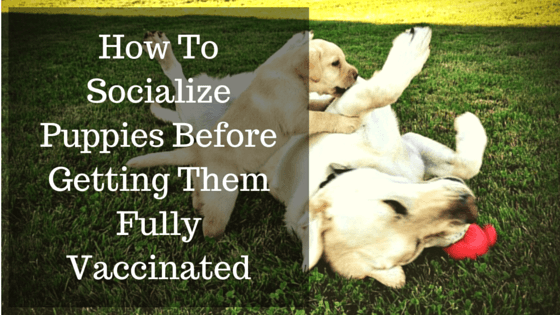
Early Socialization and Vaccination: Risk-Free Puppy Socialization
One of the most effective (and easiest ways) to prevent a huge slew of behavioral problems in dogs is to socialize them early. By “early socialization”, I do mean before the pup may have had all of their vaccines; which I do believe should happen on a responsible schedule. To help take the worry and confusion out of my client’s minds around vaccination & socialization; I’ve put together simple and safe guidelines and alternatives that you too can share within your doggie-loving circle.
Early Socialization Myth #1: Public Grounds Are Off-Limits
It’s a common misperception among dog-owners that having their puppy outside on the ground or anywhere in public is dangerous until they’re completely and entirely vaccinated. If we as dog-owners wait to begin socialization, our pups are at a much higher risk for any behavioral issues to strengthen and take hold. The good news: There’s a happy medium. It’s all about discernment and caution.
Myth #2: Puppy Classes Are A No-No Without Vaccinations
Clients often ask me if it’s safe to take their puppy outside. The simple answer is: OF COURSE IT IS! It’s equally important to expose them to their new world AND to begin the first rounds of vaccines. A great start is to encourage the practice of the first round of vaccinations because Parvo and Distemper can be quite violent in the body of a puppy. Taking action with the first round coupled with erring on the side of caution with common sense will keep the risk of both at nil while setting the tone for social integration at the onset.
Myth #3: You Must Stay Off My Property!
Rather than go extreme, it’s most important the dog owner knows who’s been ON the property. Having a fenced-in property is an ideal way to manage this without the stress of guessing. A fenced-in property is awesome, because it keeps the pup contained while keeping other unwanted critters out! Additionally it can assure that the puppy will have a private play place where he can learn about different surfaces and textures. You’ll find the pup can learn about other noises and be able to see the great outdoors safely and freely. Most importantly it makes knowing who has been on the property easy. Use caution though, if your client’s uncle brought Boomer, their family’s lab, up from the big city recently, some precautions might need to be in place for in and around the home.
Myth #4: The Mall And My Mutt Don’t Mix
The Mall is what I like to think of as the “Not so Beaten-Path”. It can be a wonderful place for all types of socialization to occur. Today, there are a ton of big named stores that allow pups through the doors that are so infrequently used! Macy’s, Lowes, Nordstrom, and Old Navy are perfect, just to name a few. So, pack up the puppy and get to the stores! So often people find a puppy in a store so novel that they will scurry over to meet your client’s pup making the “people meeting” part of socialization super easy. You might even find that the clothing racks and the hustle and bustle of the stores provide excellent learning opportunities. In an environment such as The Home Depot or Lowes you may get the added energy of a burly contractor eagerly offering a puppy petting session.
Here is a great list of pet friendly stores that will keep your client’s pup safe with good socializing to boot!
Myth #5: Costume Parties Are for Halloween
What happened to the days of costume parties?! Have your clients dig out those old Halloween costumes, get out those groovy bell-bottoms and have a ball! If anyone needs a reason to invite some friends over for a little shindig, now they’ve got the perfect excuse. Make the new pup the guest of honor and have the treats flow from the guests while exposing the pup to all different kinds of people and outfits!
Myth #6: Kids And Puppies Don’t Mix
Responsible kids make great teachers. Ask your clients if they know any kids that are well-mannered and responsible around dogs, and have them over for a play date with your client’s pup. Because puppies can get nippy and excited around bubbly kids, it will be important to teach the pup from a young age that kids are people, too.
It’s true: The World is our Playground, and it doesn’t have to wait for the new pup to be all grown up!
Check out this handout with safety tips and guidelines for new puppies, socialization, and vaccination.
What are some of the ways you socialize your clients pups before they are completely vaccinated?
Get Dog Training Business Tips!
Receive valuable dog training business tips and resources every week! Subscribe to The Modern Dog Trainer now by submitting your name and email below.
[mc4wp_form]
![Mental Stimulation Ideas For Dogs]()
by Liz Wyant | Mar 27, 2015 | Training Methods
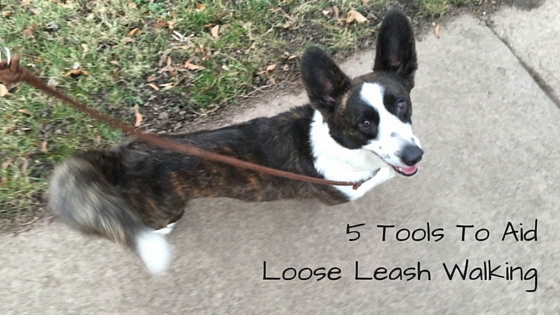
As discussed in a previous article, helping clients teach their dogs to walk nicely on a leash can be a struggle. But there are some tools available that can help your clients manage their dogs and make walks more pleasant while assisting with loose leash walking.
Front Clip Harness
Harnesses are wonderful for keeping pressure off of a dog’s delicate and injury-prone neck area. However, to make a pulling dog easier to walk, you want to make sure the harness clips in the front, at the chest, not at the back. Having a front clip harness can make loose leash walking easier because when the dog pulls, the front clip swings the dog around to face you which keeps them from getting a lot of leverage. The most popular front clip harness is probably the Freedom Harness by 2 Hounds Design.
Waist Leash
It is remarkably frustrating for your clients to have their arms yanked around while walking their dogs. Hand-held leashes can actually hinder loose leash walking a bit because there is no set length for the dog to learn to work within; the leash is perhaps 6′ long when the arm is at the side, but when the dog pulls they can gain another 18-24″ from the arm getting yanked! A good waist leash can provide consistency for the dog to aid in their loose leash walking skills while keeping your clients safe. Not only do their arms not get jerked around because the leash is around their hips, if the dog does lunge they are much less likely to get pulled over because the leash is at their center of gravity. A good waist leash that is safe enough for even the strongest dogs is the Dog-Safe Hands-Free Leash by Blue Dog Training.
Target Cue
A very simple hand targeting cue that has been heavily reinforced can make loose leash walking much more attainable. When your client’s dog starts getting close to the end of the leash, they can cheerfully request a target and the dog will come back and bop their hand. When rewarded for this frequently enough, the dogs will learn it might just be easier to stay closer in case their owner decides to cue them again. Most dogs think hand bopping is great fun!
Large Safely Contained Area Or Long Line
Having access to a fully enclosed field or tennis court has multiple benefits when it comes to loose leash walking. Your clients can allow their dogs off-leash safely to run some of the crazies off before going on a more structured walk. Or they can stroll around the field and reward heavily when their dog comes by them. This creates a dog that loves being around its owner! If the area is not 100% safely contained, a long line can provide the same benefits. Sturdy 50′ lines can be made very inexpensively from items at any large home improvement store. Remember – a 50′ line actually gives the dog 100′ of running room, plenty to allow the dog to zoom off some of that energy.
Clicker And Treats
These are counting as one “tool” because they are a set. Though all the above tools will make loose leash walking more comfortable for your clients, you still want to show them how to use their clickers and treats to train an actual loose leash walking behavior with their dogs, not just manage it. Management is great. Training is better.
What tools have you found that help your clients manage comfortable loose leash walking?
Get Dog Training Business Tips!
Receive valuable dog training business tips and resources every week! Subscribe to The Modern Dog Trainer now by submitting your name and email below.
[mc4wp_form]
![Mental Stimulation Ideas For Dogs]()
by Kat Camplin | Mar 23, 2015 | Training Methods
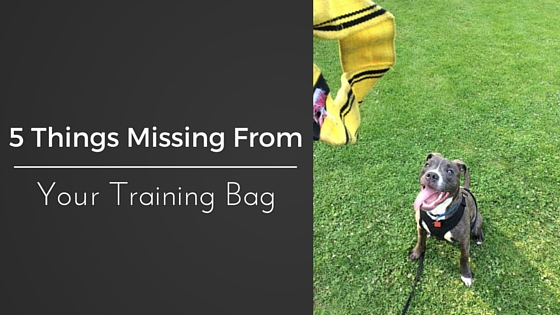
What’s in your training bag? You may be missing some helpful tools!
Are you having difficulty doing set-ups that allow the dog to succeed? These items are terrific for creating intermediate steps while training impulse control and desensitizing for reactivity.
1. An External Speaker
There is a big gap between playing scary sounds on your phone or tablet and the real, live version of the same sound. Sometimes you just can’t get enough distance to the sound source to not see a backslide in fearful reactions. An external speaker can bridge this gap for you. Hook it up to your phone or tablet and you get to use the same sounds at a slightly higher volume. This OontZ speaker is small, portable, and connects via bluetooth which can make it easier to hide for more realistic set ups.
2. Tasty Goop
Biting puppies need to learn licking is better than biting. Smearing yummy stuff on your hands and arms while working on friendly greetings, putting on collars and leashes, or playing with toys, redirects biting to some reinforcing licking. While peanut butter is tasty, it’s not particularly nice to smear all over yourself. Kong Spread or canned cheese are better options and they don’t need to be refrigerated. Plus, the puppy seems to get all of it off, whereas peanut butter always seems to leave remnants.
3. A Flirt Pole
Flirt poles are awesome. You get to teach impulse control, tug, appropriate play, and chase and grab bite away from human hands and legs. The best part is you get to use your client’s own dog toys, so there isn’t any chance you’ll have to replace toys if they’re shredded due to tiny puppy teeth. If you’d like to make your own, you can find instructions here: How To Make A Flirt Pole. Manufactured flirt poles are available on Amazon, but you can make one yourself easily for under $10 with PVC and rope from Home Depot or Lowes.
4. Wildlife Scents
Whether you’re working on “Leave It” with loose leash walking, or using the opportunity to sniff as Premack reward, knowing where the wildlife scents are is extremely helpful. You can set them up next to specific trees, mail boxes, or cars, and know exactly where they are so you can give the cue well in advance. Recommended scents to start with would be rabbit and squirrel. In areas with more diverse wildlife, look at scents that replicate animals in your area. Wildlife scents are available on Amazon and GunDogSupply.com online.
5. Remote Controlled Car
Remote controlled cars are one of the more useful tools you’re probably missing. They make little engine type noises so you can work on sound sensitivity or socialization. They move so you can work on motion sensitivity and prey drive. You can control them from a distance so you can work on desensitization at a successful location. Use them to work on barking out front windows. You can make the car move while inside with your learner so you can teach an alert or “look at that.”
Putting Items Together
Is your learner succeeding too quickly? Put items together to make things more difficult. Strap a stuffed squirrel to the top of your remote-controlled car, add some squirrel scent and your phone with squirrel chatter sounds, and you’ve got an awesome tool to work on impulse control around prey.
Get Dog Training Business Tips!
Receive valuable dog training business tips and resources every week! Subscribe to The Modern Dog Trainer now by submitting your name and email below.
[mc4wp_form]
![Mental Stimulation Ideas For Dogs]()
by Monica Callahan | Mar 16, 2015 | Training Methods
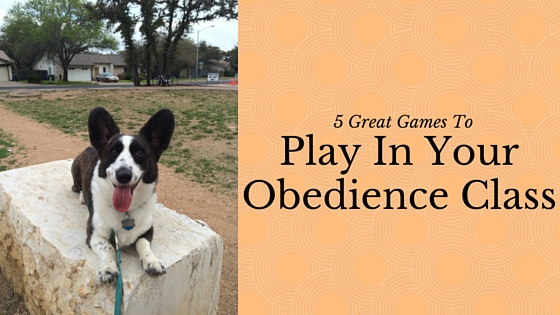
Fun Games To Play In Obedience Class With Your Clients
Obedience class can become repetitive and boring pretty quickly for our students if we do not make it fun for them. Games are a great way to get both the dog and the owners invested in training without making it hard for them. Both dogs and owners will be getting great recalls and loose leash walking without even realizing it due to some fun games. Here are five games that are great to play in obedience class to get our students excited about learning.
1. How Do You Sit?
This game can be played two different ways depending on your end goal. If you want to work on the speed of the dog’s sits, then you can set a timer for two minutes and have your handlers ask their dogs to sit as many times as possible in the two minutes while reinforcing each sit. Don’t forget to count your sits! This works on heavily reinforcing the behavior and can get your owner’s excitement up.
Another way to play is working on stimulus control and context. How many different ways can your students ask their dogs to sit and their dogs comply? You give the position and the students give it a try. Some examples may be, facing away from the dog, sitting down, bending over, doing jumping jacks, clapping their hands over their heads, etc. This is a fun one and really lets you know how well their dogs are understanding the behavior.
2. Relay Walks
This is a good way to practice loose leash walking in a fast paced environment. You can either have the handlers relay around a small obstacle course (weaving between cones or around objects), or have them hold a golf ball on a spoon. They must move down and back without dropping the golf ball. If the ball is dropped, someone will retrieve it and they must wait until the golf ball is back on their spoon. Whichever team finishes first is the winner.
3. Leap Frogs Down
This game is played in the similar fashion of the game Leap Frog. Split your class into two teams and have them gather at a start line. Have a set finish line. The team member that is up first must down their dog and have the dog hold a stay. The next member does the same thing. Each member goes down the line with a down stay until the last member performs the down. Now the first team member moves to the end of the line and repeats the down stay. The rest of the team follows. The first team to cross the finish line wins. If a dog gets up during the game, the whole team must go back to the start line and start over.
4. Recall Races
Have two dogs hold a stay and have the owners walk a good distance away. Have both dogs recall to their owners. Gates may be used for novice dogs who may veer from course. As the dogs get good at this game, begin to introduce distractions along the way, whether it is someone sitting in a chair, a ball on the ground, or even a treat. Work from easy distractions to hard.
5. Musical Hoops
This game can be played with many different things as the ‘safe zone’ such as, hoops, mats, towels, or low platforms. We will use hoops for this example. Set up hoops in a straight row, one less than the amount of dogs you have in class. Have someone play music while the students and their dogs walk around the hoops in an organized fashion. Students can use clicker/treats to reinforce. When the music stops, students and dogs must make their way to the hoop and get their dogs to perform a behavior requested by the instructor. Whichever dog is left that doesn’t perform the behavior in a hoop is out of the game. Remove a hoop and repeat. Repeat this until you have one dog left, he is the winner!
All of these games can be made harder as your students progress in the class. Keeping the students invested in learning and challenging them will help your students retain what they learned and want to train with their dogs. These are only a few games that can be played in obedience class. What are some other games that you enjoy playing in your obedience classes?
Get Dog Training Business Tips!
Receive valuable dog training business tips and resources every week! Subscribe to The Modern Dog Trainer now by submitting your name and email below.
[mc4wp_form]
![Mental Stimulation Ideas For Dogs]()
by Laurie Schlossnagle | Mar 13, 2015 | Training Methods
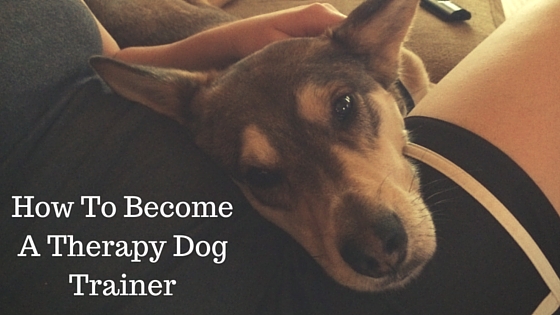
Therapy dogs are a growing population and there is a huge need for trainers and training classes to lead all those new volunteers. These are seven tips to become a therapy dog trainer.
Experience
Therapy dog trainers should have experience working a therapy dog in therapy situations. If your dog is not suitable, borrow a dog. Registered teams do not need to be traditional dog-owner teams; it just needs to be a dog you have a relationship with and will work with you. While you can’t possibly offer your students a full spectrum of experiences, it is important to be able to offer them some. (Therapy dog visits are always new and changing – that’s why it is important for teams to be flexible and accommodating to new situations, environments, people, etc.)
Registering Organizations
Therapy dog trainers should be familiar with the prevalent/popular registering organizations in your area: their insurance policies, their testing requirements, policies and procedures, their equipment requirements, and what is expected and prohibited on visits. Ideally, be a part of at least one of them as a team, as a supporter, or as an evaluator. Being familiar with the organizations and their guidelines will help you know what is required (or prohibited) and will help you determine what and how to teach. (It is important that therapy dog teams are registered and insured with a reputable organization. Many facilities require it. If there is an incident and the team is not registered/insured, it falls to homeowners/rental policies and can be financially devastating.)
Think outside the box!
Therapy dog work is no longer limited to nursing homes and libraries. There are therapy dog teams in a wide variety of locations and situations – hospitals, rehab centers, physical therapy centers, dentist offices, psychologist/psychiatrists’ offices, social workers, schools at all levels and abilities, colleges, various work places, court rooms, depositions, lawyers’ offices, funeral homes, hospices, after school programs, etc. So while a dog and handler may not fit a “traditional” therapy dog mold, they may fit into one of the less traditional therapy dog opportunities available to teams.
A Team Effort
It is important that therapy dog handlers understand that doing therapy dog work is a TEAM effort – both the human and the dog need training and preparation to be their most effective and successful. Challenging the handlers in your classes is important – handlers should be able to appropriately handle different situations in different environments as well as being the best possible handler and advocate for their dogs while visiting.
Be creative in your teaching!
Use lots of different props and equipment. Challenge both the humans and the dogs. Expect and require full participation from teams. Go on field trips. Utilize the information and curriculum available for both the Canine Good Citizen and the Canine Life and Social Skills evaluations. Invite lots of different people to come and help in your therapy dog class. Therapy dog teams cannot be over-prepared.
Foundations
Foundation behaviors are important in therapy dog work. A solid foundation will set teams up for success as well as giving them something to fall back on when a strange, unique, or unexpected situation arises while doing therapy dog work. Heavily reinforce the foundation. Incorporate exercises and games into your curriculum that incorporate foundation behaviors – focus/attention, touch, sit, down, stand, stay, polite leash walking, handling, greetings, and mat work. Distance is not important in a therapy dog class as most registrations require the handler always have their dog on a leash and the leash in the handler’s hand. But duration and distractions are very important!
Support
Ongoing support and training is important for therapy dog teams. Offering teams regular access to a trainer and opportunities to continue and maintain their training is reassuring and encourages teams to continue to train and mature as a team.
Being a therapy dog team is very rewarding; being their instructor/trainer is priceless. Teaching therapy dog teams may take a bit more preparation, but the positive results will far outweigh the investment of time and energy. What is your favorite out-of-the-box teaching tool?
Get Dog Training Business Tips!
Receive valuable dog training business tips and resources every week! Subscribe to The Modern Dog Trainer now by submitting your name and email below.
[mc4wp_form]

 Other Activities
Other Activities

 This is part 2 of a 3-part series on Behavior Adjustment Training (BAT), created by Grisha Stewart. Part 1 can be read
This is part 2 of a 3-part series on Behavior Adjustment Training (BAT), created by Grisha Stewart. Part 1 can be read








